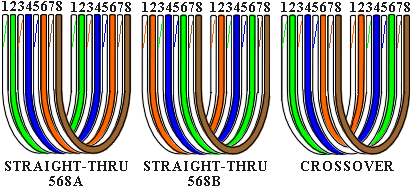
|
|
|
|
Note that pins 4, 5, 7, and 8 and the blue and brown pairs are not used in either standard. Quite contrary to what you may read elsewhere, these pins and wires are not used or required to implement 100BASE-TX duplexing--they are just plain wasted. However, the actual cables are not physically that simple. In the diagrams, the orange pair of wires are not adjacent. The blue pair is upside-down. The right ends match RJ-45 jacks and the left ends do not. If, for example, we invert the left side of the 568A "straight"-thru cable to match a 568A jack--put one 180° twist in the entire cable from end-to-end--and twist together and rearrange the appropriate pairs, we get the following can-of-worms:
Keeping the above principles in mind, we can simplify the diagram for a 568A straight-thru cable by untwisting the wires, except the 180° twist in the entire cable, and bending the ends upward. Likewise, if we exchange the green and orange pairs in the 568A diagram we will get a simplified diagram for a 568B straight-thru cable. If we cross the green and orange pairs in the 568A diagram we will arrive at a simplified diagram for a crossover cable. All three are shown below.
[ Top | Contents | Previous | Next - Let's Make it Simple ] | |
|
| Home | Guides | How to | Reviews |
FAQs | Forums | Forum Archives |
Links | News |
| Newsletter | Online Store | Potpourri | About Dux | Advertising | Contact Info | Privacy | Copyright, Disclaimer, and Trademark Information Copyright © 1996-2004 Larry F. Byard. All rights reserved. This material or parts thereof may not be copied, published, put on the Internet, rewritten, or redistributed without explicit, written permission from the author. |

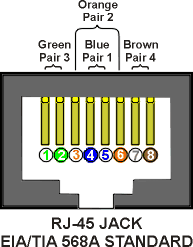
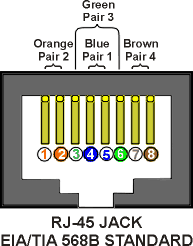
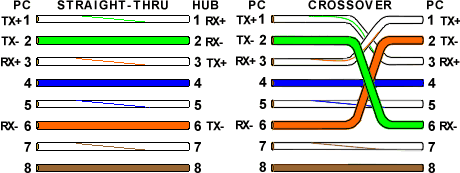
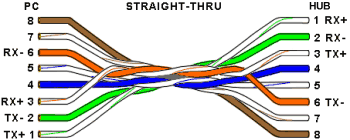 This further emphasizes, I hope, the importance
of the word "twist" in making network cables which will
work. You cannot use an flat-untwisted telephone cable
for a network cable. Furthermore, you must use a pair of
twisted wires to connect a set of transmitter pins to their
corresponding receiver pins. You cannot use a wire from
one pair and another wire from a different pair.
This further emphasizes, I hope, the importance
of the word "twist" in making network cables which will
work. You cannot use an flat-untwisted telephone cable
for a network cable. Furthermore, you must use a pair of
twisted wires to connect a set of transmitter pins to their
corresponding receiver pins. You cannot use a wire from
one pair and another wire from a different pair.